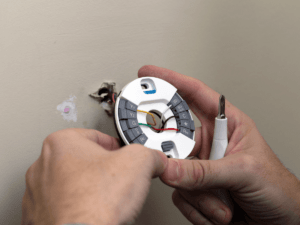Using a Delonghi portable air conditioner is like a cherry on the top. But, if you are fed up with your relentless drip symphony, unyielding leaks, and never-ending quest to drain the unit, you are at the right place.
The question arises how to drain the Delonghi portable air conditioner. Worry not for salvation is at hand.
In this blog, we are unveiling the secrets, conquering the pain points, and providing guidelines for the captivating dance of draining your Delonghi portable air conditioner.
As we give you a dry sanctuary like no other, get ready to witness a transformation of epic proportions.
Sometimes, the insidious droplets dare to mock your aspiration, yearning for an oasis amidst the scorching summer, as you entrusted your hopes to the Delonghi portable air conditioner.
Being a beacon of enlightenment, our blog illuminates the path to victorious draining, unraveling the enigma that haunts the experience of your cooling and empowering you with knowledge.
We inform you with precious insights, unveiling the instructions and step-by-step guidelines through the intricacies of conquering the draining challenge.
Steps on How To Drain Delonghi Portable Air Conditioner?
Step 1: In the first place, locate the condensate drain outlet on the air conditioner. As you identify the strategic point from which the water flows, this step sets the stage for the triumph of draining to come.
Step 2: Gather the necessary tools required for the draining process. Gather a bucket or tray to collect the drained water. You can also use a drain pan.
Step 3: Locate the drain hose which is found on the back or middle of the air conditioner.
Put the bucket under the condensation drain outlet which can collect the water. Make sure to place the bucket right under the drain waterfall so that the floor does not get wet.
Step 4: Releasing the pent-up liquid within the air conditioner, with purpose and resolve, remove the cap. Open the condensate drain valve and let the water drain out of the tray/tank of the air conditioner.
Make sure the water is captured by the bucket. If needed, adjust the place of the bucket or tray. Let the water drain completely till the last drop. Dry up the face of the drain port with a dry cloth or towel.
Step 5: Once the water is drained, close the drain port and cover it with a cap. Tighten the cover to make sure no leaks from the drain port. Remove the bucket and wipe up the water drops from the floor.

When Should Delonghi Portable Air Conditioners be Drained?
Delonghi portable air conditioners have a feature which allows you to drain at the end of the season.
The system uses the water to cool the condenser which is collected from the humidity.
This water allows the maximum efficiency. But, if the humidity level is high, the air conditioner needs to be drained more often.
Draining water is a crucial part to avoid damage and maintain air quality. It prevents leaks and water damage, and improves the cooling efficiency.
Draining water on time helps in maintaining the balance of performance efficiency of the system and you can enjoy the cooling to your fullest.
Why Draining Water from Delonghi is Important?
Draining water from Delonghi is one of the crucial features that is necessary to maintain the functioning of the air conditioner. This process helps in creating a quiet operating system, less moist and less humid environment.
It also helps in maintaining the system of the unit. The Delonghi boasts a sleek and stylish design that blends with any interior décor. It also improves durability and reliability of the air conditioner.
Conclusion
We hope this blog has served you with the full basket of knowledge, equipped with the methods, strategies required for draining the water from the air conditioner.
And there you go. Gone are the days of battling unwelcome drips and fretting over leaks.
With the help of this blog, now you have enough guidelines and knowledge to drain the Delonghi portable air conditioner and to maintain a dry sanctuary and avoid moisture in the surroundings.
Enjoy the revel in the serenity of dry heaven and share your new found expertise with fellows.
Valiant readers, stay tuned for future chapters/blogs in which we will offer sage troubleshoots and address the questions that come to your mind.







